#鎌倉時代
Explore tagged Tumblr posts
Photo
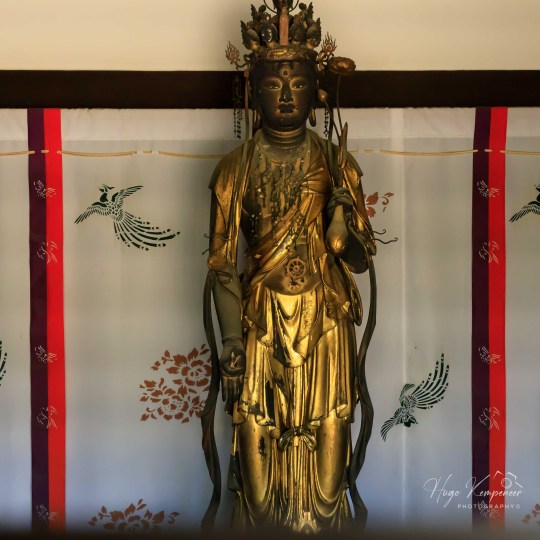
Several scenes of the temple grounds of Shin-Yakushi-ji in Nara, Japan.
#Buddhism#Empress Kōmyō#Japan#Kamakura period#Nara#Shin-Yakushi-ji#Shin-Yakushiji#Twelve Divine Generals#Yakushi Nyorai#travel#光明皇后#十二神将#新薬師寺#薬師如来#鎌倉時代
30 notes
·
View notes
Text

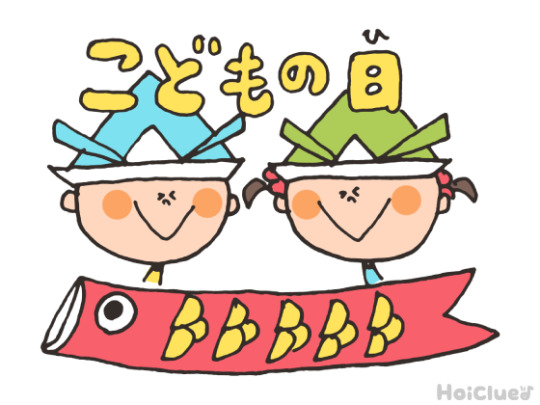
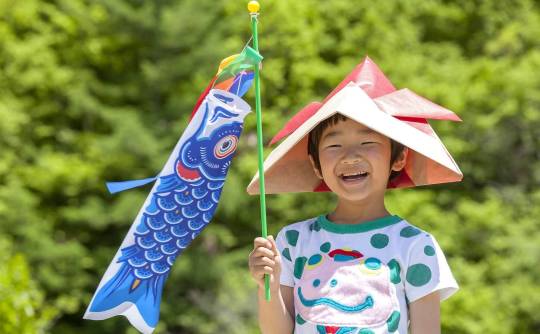

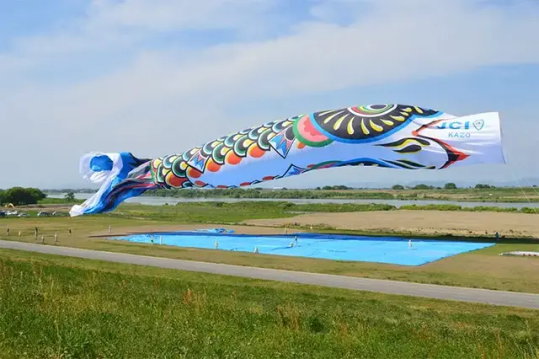
Sean bienvenidos japonsistasarqueológicos, a una nueva entrega cultural en esta ocasión os voy comentar la festividad, del día del niño que se celebra cada 5 de Mayo que se llama Kodomo no Hi y se escribiríaこどもの日 una vez dicho esto pónganse cómodos que empezamos. - ¿Cuándo surgió el día del niño?La festividad, surge en el siglo VIII d.c en lo que respondería al periodo Heian, posiblemente tendría influencia de china al respecto ya que se basó en Tango no Sekku. El Sekku se basa en los puntos de inflexión de las estaciones y se basa en la teoría de los cinco elementos del yin y el yang en China. - La forma tradicional de celebrarlo es ofrecer ofrendas estacionales a los dioses, rezar y comer juntos los productos de segunda mano.En el período Kamakura, en pleno auge de los samurais, se convirtió en un evento importante para orar por el crecimiento y la salud de los niños y la prosperidad de la familia, con adornos como armaduras, cascos, serpentinas de carpa y muñecos festivos. - Ahora a continuación mencionaré algunos dulces de los que se suelen comer el 5 de Mayo: Kashiwa mochi,Chimaki, beko mochi, akumaki , pastel no koi. - Espero que os haya gustado y nos vemos en próximas publicaciones y que pasen un feliz día del niño.
-
今回は、毎年5月5日に行われる「こどもの日」というお祭りについてお話しします。「こどもの日」とは、「こどもの日」と書いて「こどもの日」と読みます。 - こどもの日」の起源は、紀元8世紀の平安時代にさかのぼりますが、「端午の節句」が元になっていることから、中国の影響を受けている可能性があります。節句とは、季節の変わり目を表すもので、中国の陰陽五行説に基づくものです。 - 季節のお供え物を神に捧げ、祈り、中古品をみんなで食べるのが伝統的な祝い方です。 武士ブーム真っ只中の鎌倉時代には、甲冑や兜、こいのぼり、祝い人形などを飾り、子供の成長や健康、家族の繁栄を祈る大切な行事となりました。 - 柏餅、ちまき、べこ餅、あくまき、こいのぼりのお菓子です。 - 気に入っていただけたなら幸いです。今後の記事でお会いしましょう。そして、楽しい子供の日をお過ごしください。
-
Welcome to a new cultural delivery in this occasion I am going to comment on the festivity, the day of the child that is celebrated every 5th of May that is called Kodomo no Hi and it would be writtenこどもの日 once said this make yourselves comfortable that we begin. - When did Children's Day come about? The holiday, which dates back to the 8th century AD in what would be the Heian period, was possibly influenced by Chinese in this respect as it was based on Tango no Sekku. Sekku is based on the turning points of the seasons and is based on the five element theory of yin and yang in China. - The traditional way to celebrate it is to offer seasonal offerings to the gods, pray and eat second-hand goods together. In the Kamakura period, at the height of the samurai boom, it became an important event to pray for the growth and health of children and the prosperity of the family, with decorations such as armour, helmets, carp streamers and festive dolls. - Now here are some of the sweets usually eaten on May 5th: Kashiwa mochi, Chimaki, beko mochi, akumaki, no koi cake. - I hope you liked it and see you in future posts and have a happy children's day.
#日本#こどもの日#平安時代#中国#端午の節句#鎌倉時代#佐村河内#柏餅#ちまき#��史#あくまき#ケーキ#こい#japan#KodomonoHi#Heianperiod#china#Tangonosekku#Kamakuraperiod#samura#Kashiwamochi#Chimaki#history#akumaki#cake#koi#culture#文化
12 notes
·
View notes
Quote
司馬遼太郎さんは、 日本人の特性を形づくるものとして「武士」の存在も挙げています。 武士のことを「人間の芸術品」と呼んでいます。 明治維新以降、異例の早さで先進国の仲間入りができた理由は 国民全体に 「汚職がなかったこと」 「公意識が、横溢していたこと」 これを“痛々しいほどまで清潔であった”と、表現しています。 このような高い倫理観は「武士」からきているのです。 武士の倫理観である「名こそ、惜しけれ」の精神。 =名を汚すようなことはしない。恥ずかしいことはするな。 そもそも「武士」とは、貴族支配の律令社会から、地方へ逃げ出して、 自ら農地を開墾した「百姓」が、武装し有力化した人々。 そんな武士が、鎌倉時代、初めて政権を獲ったのです。 素朴なリアリズムに裏打ちされた「百姓の政権・鎌倉幕府」により 自分の土地=収入を、保証してもらっている恩義に対する 「名こそ、惜しけれ」の精神。 「名前を汚すような、恥ずかしいことをしてはならない」 「公のために、働く」 武士に端を発するこの思想も、日本人が日本人たる所以なのです。
公意識と名こそ惜しけれ・・・日本人とは何か?② | 葬祭業経営コンサルタント中西正人
3 notes
·
View notes
Text
風鈴の音 世界の皆様に捧ぐ!
Genden-TukuRich®️の世界へようこそ!VOL.240 蒸し暑い日が続いている。 皆様方はどうお過ごしだろうか? 毎日寝苦しい! 風呂に入っても気持ちが良いのは束の間だ!! エアコンがないとせっかく風呂に入って汗を流しても また汗をかいているのではないだろうか? 寝る頃には汗ばみ不快な思いで ベッドに横たわることになっているはず��!! そこで役立つのが風鈴だ!! 風鈴の音はなぜか耳触りの良い音を奏でてくれる。 寝苦しい熱帯夜も涼しい気持ちにさせてくれる。 日本人で良かったと思う。 湿度の高い日本だからこそ生まれた文化であろう! 先祖に感謝の思いである!! では風鈴はいつ生まれたのだろう?! 中国で竹林に吊り下げて風の向きや音の鳴り方によって吉凶を占ったのが始まりのようだ。 中国2000年前のことである。 と言うことは中国にも風鈴があると言う…
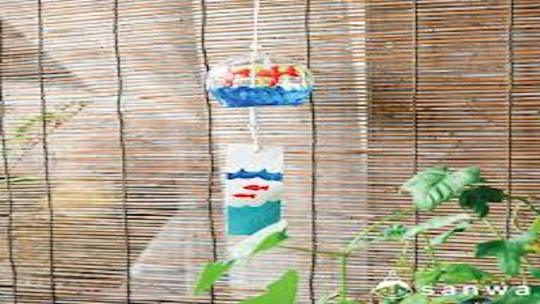
View On WordPress
2 notes
·
View notes
Text
逃げ上手の若君 2話 状況に素早く対応するの確かに大切!
1 note
·
View note
Text
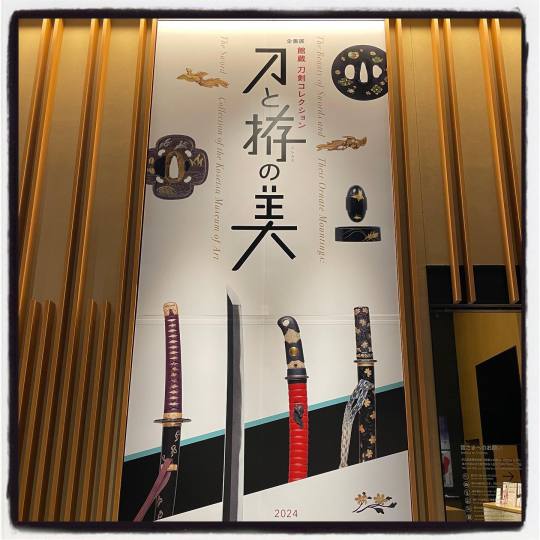
0 notes
Photo
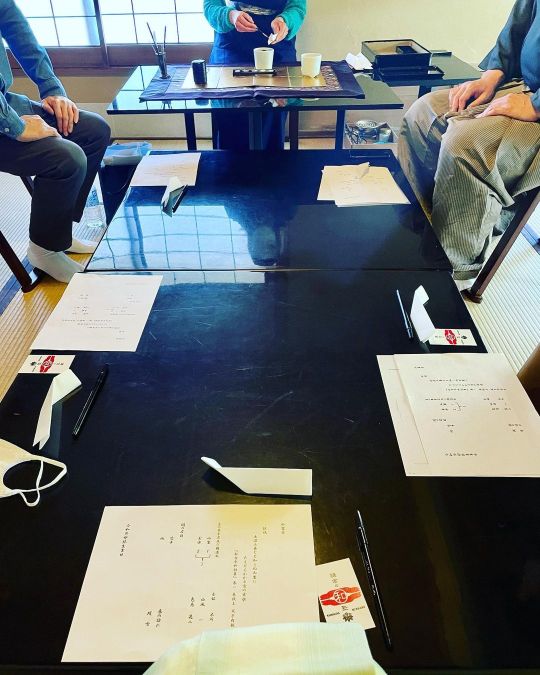
#香道 体験に #鎌倉 にある #お茶室 へ #お香 席は、なんだかんだと 色んな形で4回目 なかなかない機会なので見逃せない こちらでは、ほぼ毎月開催されていると知っていたけど全くタイミングが合わなかったので、やっと。 また多くの学びや 繋がる瞬間があって たまらない🤩 #日本史 とか歴史上の人物名とか ちょーーーー疎い私には とても勉強になりました✨ また大概の事を忘れちゃうのでしょうけど お軸が #太田道灌 #直筆 で #500年前 の物って事は覚えてる。 #安土桃山時代 って仰ってたかな 「一体おいくらの価値があるんだろ〜」 とか思っちゃダメなやつねw つづく #北鎌倉 #kamakura #japan #japantrip #japantravel #茶室 #和文化 #日本文化 #伝統文化 #歴史 #japaneseculture #japanese (北鎌倉 宝庵 -Houan-) https://www.instagram.com/p/Cppj23bSw1h/?igshid=NGJjMDIxMWI=
#香道#鎌倉#お茶室#お香#日本史#太田道灌#直筆#500年前#安土桃山時代#北鎌倉#kamakura#japan#japantrip#japantravel#茶室#和文化#日本文化#伝統文化#歴史#japaneseculture#japanese
0 notes
Text

Heart Sutra ~ A sutra that describes “The Heart of the Perfection of Wisdom" (9)
Hoichi the Earless – A Japanese tale about spiritual merit of the Heart Surtra
When Xuanzang crossed the Silk Road to India, recited the heart Sutra and protected himself from evil demons through its spiritual power. (Ref). There is a folk tale in Japan that tells its spiritual merit.
A young Biwa-hōshi (lute monks) named Hoichi lived at Amida-dera Temple in Akamaseki. Hoichi was a master storyteller of the Tale of the Heike, especially the Dannoura battle, which is said to ‘make even the demons shed tears’.
The Battle of Dannoura was a historical fact, once a decisive battle between the Genji and Heike clans, with many Heike warriors and court nobles sinking to their deaths in the sea, and perished. The temple was built on the coast overlooking Dannoura to commemorate the Heike family.
One night, when the abbot is away, a warrior suddenly appears out of nowhere. Hoichi is begged by the warrior to go to the palace of the ‘nobleman’ to play his biwa. Although the blind Hoichi could not understand them, many noblemen seemed gathering. They requested a piece about the battle of Dannoura. Everyone is sobbing aloud and looking intensely moved. Hoichi is asked to play a whole week, and starts going out every night.
The abbot became suspicious and had temple men follow him one night. It was raining heavily, and Hoichi was alone in the empty cemetery of the Heike clan, playing his biwa in front of the grave of Emperor Antoku, who had died an untimely death as a child, surrounded by a frighteningly large number of demon firebrands. The astonished temple men forcefully bring Hoichi back home. The abbot then, knowing the nature of the grudge spirits that the body parts on which the sutras are written are transparently reflected and invisible, copied the Heart Sutra on Hoichi's whole body together with the temple men, so that the grudge spirits could not recognise Hoichi. However, they did not realise at the time that they had forgotten to copy the sutra on his ears (auricularia).
That night, as Hoichi sat alone, the warrior came for him as usual. However, Hoichi's body, on which a scripture is written, is invisible to the grudge spirit. Puzzled, the grudge spirit looked around for Hoichi, and found only his ears in the darkness, which were forgotten to copy the sutra. The grudge spirit used its monstrous power to tear the ear off Hoichi's head. The spirit left, silently. When the abbot returned at dawn, he realised that when he had written the Heart Sutra on Hoichi's body, he had forgotten to write the sutra only on his ears, and apologised to the bloodied Hoichi for his oversight.
After that, the Heike ghost never appeared before Hoichi again, and the wound in Hoichi's ear was soon healed by the good doctor. This strange event spread throughout the world, and he came to be known as ‘Hoichi the Earless’.
(There is also a version where Hoichi dies.)
[Image below: The tragedy of the young Emperor Antoku drowning in the arms of his grandmother, Taira no Tokiko]

般若心経 〜「智慧の完成」の精髄を述べる経典 (9)
耳なし芳一 〜『般若心経』の霊験にまつわる日本の物語
玄奘三蔵がシルクロードを越えインドに渡るとき、『般若心経』の霊験を信じ口誦し悪鬼どもから身を守ったことは先にも述べた(参照)。その霊験を物語る日本の民話がある。
赤間関の阿弥陀寺に芳一という若い琵琶法師が住んでいた。芳一は盲目だったが、平家物語、特に「鬼も涙を流す」といわれる壇ノ浦の合戦を語る名手だった。(琵琶法師とは、平安時代から鎌倉時代にかけて活躍した僧侶の姿をした琵琶の弾き語りで、ほとんどが盲目だった。)
壇ノ浦の戦いは、かつて源平の決戦となり、多くの平家の武士や公家が海に沈んで没した、という史実である。壇ノ浦を見下ろす海岸に、平家を弔うために阿弥陀寺が建てられた。
ある夜、住職の留守の時に、突然どこからともなく一人の武者が現われる。芳一はその武者に請われて「高貴なお方」の御殿に琵琶を弾きに行く。
盲目の芳一にはよく分からなかったが、そこには多くの貴人が集っているようであった。彼らは壇ノ浦の戦いについての曲を所望した。皆、声を上げてすすり泣き、激しく感動している様子で、芳一は自分の演奏への反響の大きさに内心驚く。芳一は七日七晩の演奏を依頼され、毎晩出かけるようになる。
不審に思った住職は、ある夜、寺の者たちに尾行させた。大雨の降る中、誰もいない平家の墓地で、幼くして非業の死を遂げた安徳天皇の墓の前で琵琶を弾いていた芳一は、おびただしい数の鬼火に囲まれていた。驚いた寺男たちは、強引に芳一を連れ帰る。
そこで住職は、怨霊の「お経が書かれた体の部分は透明��反射して見えない」という性質を知っていたので、寺男たちと一緒に芳一の全身に般若心経を写し、怨霊が芳一を認識できないようにした。しかし、その時、耳(耳介)にお経を写すのを忘れていたことには気づかなかった。
その夜、芳一が一人で座っていると、いつものように武者が迎えにきた。しかし、経文の書かれた芳一の体は怨霊である武者には見えない。怨霊は当惑し、芳一の姿を探し回った挙句、写経し忘れた耳のみを暗闇の中に見つけ出した。怨霊は怪力でもって芳一の頭から耳をもぎ取った。怨霊はそのまま去っていった。 夜明けに戻ってきた住職は、芳一の全身に般若心経を書いたとき、耳だけにお経を書くのを忘れていたことに気づき、血まみれの芳一に自分の見落としを詫びた。
その後、平家の亡霊は二度と芳一の前に現れることはなく、芳一の耳の傷はすぐに良医によって癒やされた。この不思議な出来事は世間に広まり、彼は「耳なし芳一」として知られるようになった。
(芳一が死亡してしまうバージョンもある)
#heart sutra#spiritual power#buddhism#spiritual merit#ghost story#kwaidan#dannoura battle#emperor antoku#japanese folklore#hoichi the earless#the tale of heike
96 notes
·
View notes
Text
鎌倉 五所神社 例大祭 ィ 乱材祭(みざいまつり) 海上渡御

かわい~
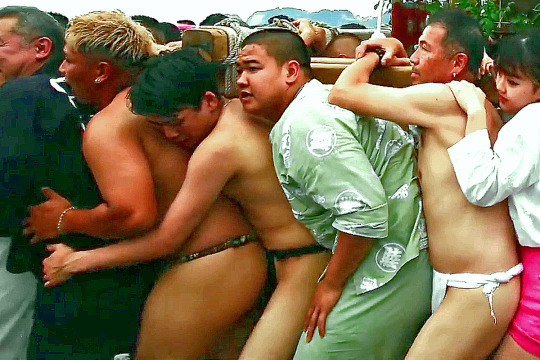
密集!腰がもみ合い状態に!


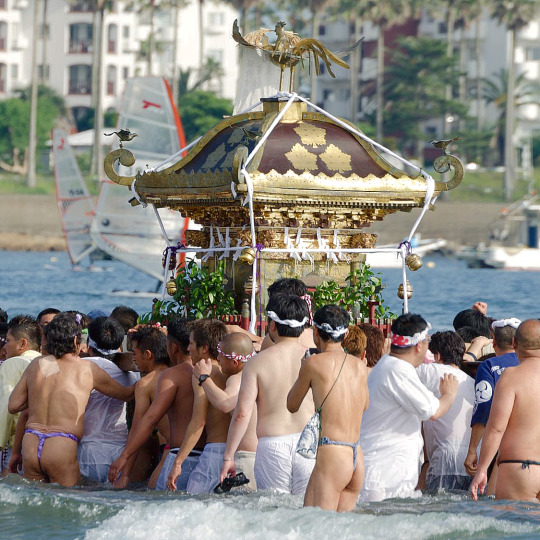
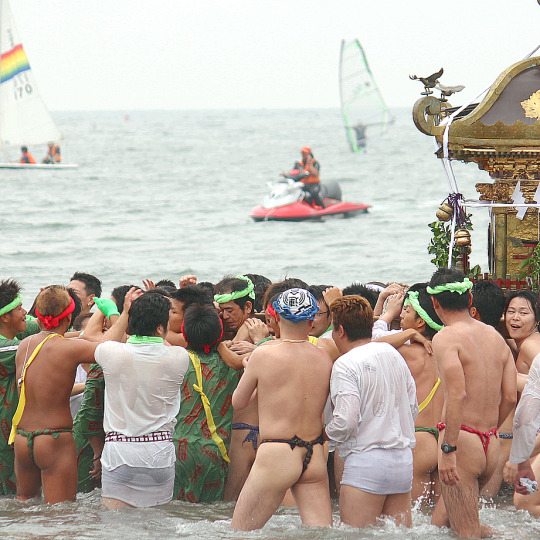
旧旧材木座村は、江戸時代前期の元禄時代に旧乱橋村(みだればしむら)と旧材木座村(ざいもくざむら)の2つに分割した。1889年(明治二十二年)に、この二つの村は合併した上で西鎌倉村に編入されて、鎌倉郡西鎌倉村大字乱橋材木座となった。その後の1908年(明治四十一年)七月には、旧乱橋村と旧材木座村の5つの神社が合併して五所神社になった。2村5社の祭りは合併して乱材祭(みざいまつり)になった。材木座は鎌倉七座と呼ばれる商工組合一つ。中世に材木を販売した座で、由比ガ浜(ゆいがはま)の東南部、和賀江付近と推定されている。
・・・そうだけど、江の島海岸も由比ガ浜もどこだか知らないよ! 材木座海岸とか和賀江と言われても分からないよ! とにかく鎌倉の(海の)祭りは同じ輿丁が舁いているから区別付かないよ。もんもんの人は、(記憶では)神輿会が主催している寒中御輿錬成大会以外は参加できないのが多いけど、乱材祭はOKだよ。
なお、合併した5社は、
材木座村の鎮守諏訪神社(現 材木座五丁目)、材木座村中島部落の視女八坂社(見目明神)(現 材木座六丁目)と、
乱橋村の鎮守であった三島神社(現 材木座2丁目9−1)、乱橋村能巌寺部落の八雲神社(現 材木座四丁目)と金毘羅宮(現 材木座四丁目)。
五所神社の所在地は乱橋村鎮��三島神社の跡地で、本殿は材木座村鎮守諏訪神社の物を移築。両村への気遣いが窺われるね。
36 notes
·
View notes
Text

興福寺・安底羅大将(国宝)
明治の廃仏毀釈を逃れた、法相宗大本山・興福寺の貴重な木造十二神将立像のうちの一体「安底羅大将」。
安底羅(あんてら)大将は、他の神将と同じく、もともと夜叉(鬼)でしたが、仏と仏法の真理に降伏し善神となって、配下に持つ七千の鬼と共に申の方角と時刻を守備しながら、他の神将が従える鬼と合わせて総勢八万四千の夜叉部隊と共に薬師如来と薬師経を信仰する者を守護する天部の仏尊です。
神将は天部の武将であるため他の仏とは違い、重厚な甲冑に身を包んでいます。
こちらの安底羅大将は申の刻の守護神らしく頭の上には猿の彫刻が彫られ、怒髪に憤怒の表情で手には宝鎚(ほうつい)を持ち、他の神将と共に日夜仏敵に目を光らせています。
「ほうつい」には「宝槌」と「宝鎚」がありますが、「宝槌」は木製のハンマー「打出の小槌」のことで、「宝鎚」は武器として使う金属製のハンマーのことをいいます。
興福寺の安底羅大将を含む十二神将は、鎌倉時代に阿弥陀仏の教えを信仰する男性信徒集団である「阿弥衆」によって造られたといわれており、ご利益は、心の中の余計な感情を取り去り、健全な精神を得るための助けをするとされています。
29 notes
·
View notes
Photo

Several scenes of the temple grounds of Shin-Yakushi-ji in Nara, Japan.
#Buddhism#Empress Kōmyō#Japan#Kamakura period#Nara#Shin-Yakushi-ji#Shin-Yakushiji#Twelve Divine Generals#Yakushi Nyorai#travel#光明皇后#十二神将#新薬師寺#薬師如来#鎌倉時代
28 notes
·
View notes
Text

Una espada con alma propia./自らの魂を宿した剣。/A sword with its own soul. La katana o (sable japonés) japonesa es un elemento, único en el mundo, porque para los samuráis la espada era su alma y perderla era todo un deshonor. La katana japonesa surge el siglo VIII, periodo Heian, pero en el periodo entre el 1192 y el 1336, durante el periodo Kamakura, la producción de espadas se amplió bastante. - 日本刀は世界でも類を見ない要素です。サムライにとって刀は魂であり、それを失うことは完全な不名誉だからです。 日本刀は平安時代の8世紀に誕生しましたが、鎌倉時代の1192年から1336年にかけて刀剣の生産は大幅に拡大しました。 - The Japanese katana or (Japanese sword) is an element, unique in the world, because for the samurai the sword was their soul and losing it was a complete dishonor. The Japanese katana emerged in the 8th century, Heian period, but in the period between 1192 and 1336, during the Kamakura period, the production of swords expanded considerably.
13 notes
·
View notes
Text
戦いに臨めば臆することがなく、自分の生も軽んじるかわりに、他者の生にも冷淡だった。
この半島から、十二世紀末、それまでの日本史を、鉄の槌と「たがね」でもって叩き割ったような 鎌倉幕府が出現するのである。
「司馬遼太郎の言葉3」p209~p238、p278
「三浦半島記」より
0 notes
Quote
1位鎌倉幕府成立が「1192年」から「1185年」に変更された (1,840票) 2位江戸時代の身分制度「士農工商」は存在しないことが明らかになった (1,610票) 3位関ヶ原の戦いの西軍の大将は石田三成ではなく毛利輝元だった (986票) 4位大化の改新が「645年」から「646年」に変更された (712票) 5位「リンカーン」が「リンカン」に変更された (708票) 6位日本最古の貨幣が「和同開珎」から「富本銭」に変更された (645票) 7位日本最大の前方後円墳は「仁徳天皇陵」から「大仙古墳」に変更された (589票) 8位徒然草の著者が「吉田兼好」から「兼好法師」「卜部兼好」に変更された (498票) 9位「ルーズベルト」から「ローズベルト」に変更された (488票) 10位「大和朝廷」から「ヤマト政権」もしくは「ヤマト王権」に変更された (382票)
【歴史】今と昔でちがう「歴史の教科書」びっくりランキング [七波羅探題★]
259 notes
·
View notes

